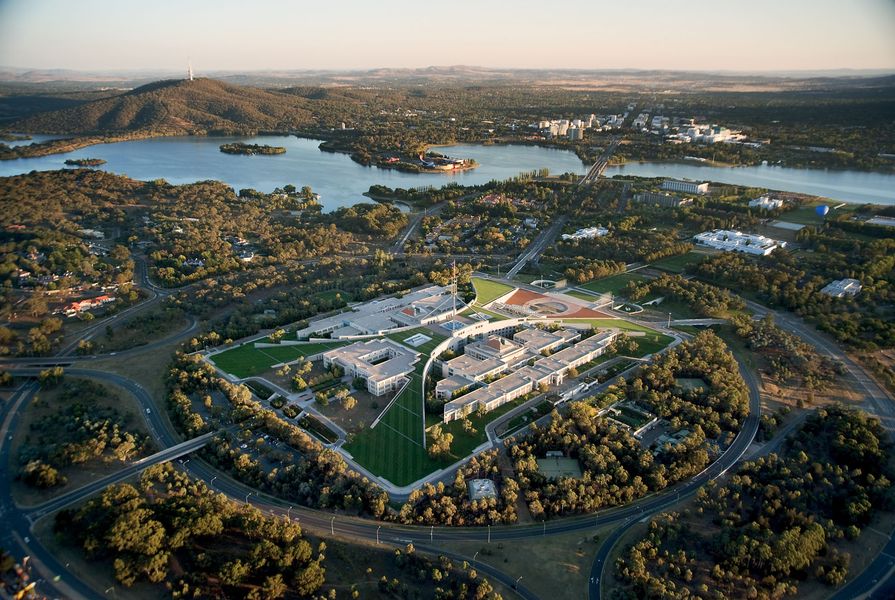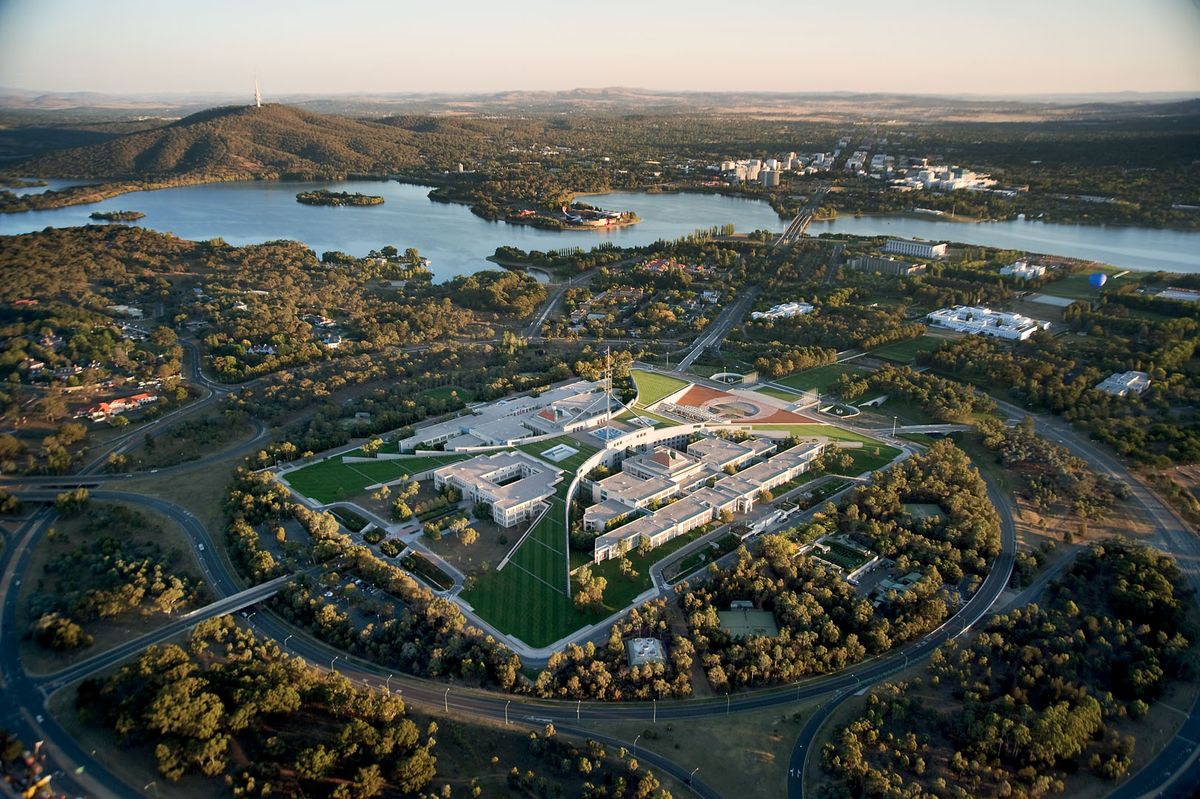The Australian government’s proposal to build a 2.6-metre high fence around the perimeter of Parliament House designed by Mitchell Giurgola and Thorp, 1988, has drawn the ire of Australia’s most eminent architects.
Ken Maher, national president of the Australian Institute of Architects was “deeply outraged” at the plans, which will restrict public access to the building’s grassy slopes.
He said the proposed fence “flies in the face of the design intent of the architect, the late Romaldo Giurgola.”
The design of Parliament House “has been widely lauded, including being awarded the 2013 National Enduring Architecture Award,” Maher continued. “The ability for the public to access the lawns was central to the concept of democracy underpinning the design. This proposed security upgrade is totally unnecessary and will not achieve the outcomes that they are seeking.
“The moral rights held in the building will be seriously compromised.”
However, the Speaker of the House of Representatives Tony Smith said parliament did not ignore the moral rights of the original architect.
“To ensure the moral rights of the late Romaldo Giurgola in the design of Australian Parliament House have been considered, the Department of Parliamentary Services conducted appropriate consultation with the nominated administrator,” Smith said.
Australian Parliament House by Mitchell Giurgola and Thorp, 1988.
Image: John Gollings
“It is important to acknowledge these works do have an impact on the original design intent of Parliament House. However, it is also important to acknowledge the world has changed since the original design brief for Parliament House was created in the late 1970s. Where possible the measures and comments put forward by the nominated administrator of Mr Giurgola’s moral rights have been noted and implemented carefully balancing risk mitigation requirements.”
Maher’s comments followed similar sentiments expressed by Australia’s only Pritzker Prize Laureate Glenn Murcutt in the Sydney Morning Herald.
“From an architectural point of view, I think it’s terrible,” Murcutt said. “Romaldo Giurgola designed this building so that you had very good access to the people – so it expressed freedom, it didn’t in any way express exclusivity. Putting a fence around it is putting a noose around it.”
The perimeter fence is part of a $60-million security upgrade for Parliament House, which also included an extra 38 CCTV cameras. The proposal passed both houses of parliament on 1 December 2016. The Speaker of the House said, “All enhancements, those already completed and those being proposed today, are the result of advice from our security agencies and are based on many months of consideration.”
This fence proposal is not the first time such a thing has been considered for Parliament House. The President of the Senate Stephen Parry pointed out, “In 2005, fences were put in place to restrict people from walking over Parliament House. For over 10 years you have not been able to walk over Parliament House.”
In 2015, the National Capital Authority in Canberra approved a $108-million security upgrade which included building a 2.6 metre high fence around the ministerial wing.
At the time, Romaldo Giurgola, who died in May 2016, said the proposal was “offensive” and that “planners may not understand the full message about openness and accountability,” reported the Canberra Times.
Senator Derryn Hinch, one of nine senators who voted against the proposal, defended the design of Parliament House and urged his fellow senators to reconsider the proposal.
“I am just asking you to reconsider taking away the thing that the building’s architects won prizes for. They won awards for this building because of the sweep of that hillside—because it was a building built under a hill. It is so Australian, and to me what you are doing is totally ruining the aesthetics,” Hinch said.
Balancing security and accessibility at Australia’s Parliament House has drawn various proposals. According to Annabel Crabb’s 2016 biography of Australia’s prime minister Malcolm Turnbull, his predecessor Tony Abbott had plans to build a concrete ditch around a large perimeter fence, “to exclude pedestrians,” Crabb wrote. “‘This is a moat! It’s ridiculous!’ Turnbull protested when he learnt of the plans and threw them out.”
Australia’s Parliament House was the result of a design competition which attracted 329 entries. Mitchell Giurgola Thorp won the competition in 1980 and the building was completed in May 1988 to mark Australia’s bicentenary. The building received the Sir Zelman Cowen Award for Public Architecture and the Canberra Medal in 1989, as well as the Civic Design Award in 1990, and the Enduring Architecture Award in 2013. The building’s project architect Richard Thorp was appointed a Member of the Order of Australia in 2015.



















